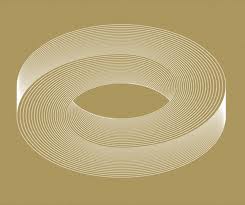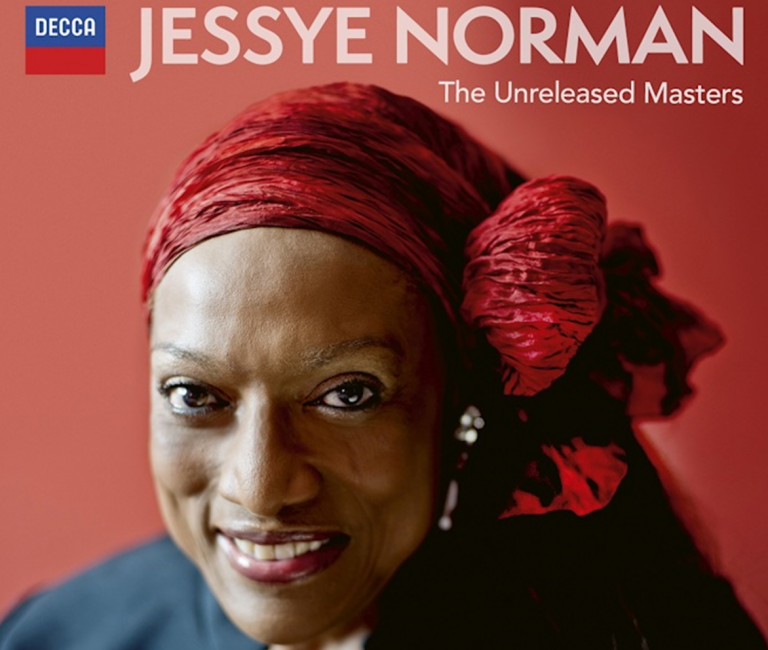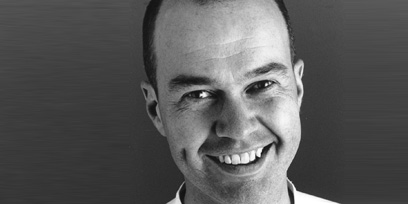The ‘RingWrap’- the Second Cycle From A Sydneysider’s Perspective

Opera Australia: Der Ring des Nibelungen, Richard Wagner
Second Cycle
State Theatre, Melbourne
27 November – 4 December 2013
During November and December Opera Australia presented the first staging of Wagner’s Ring on the east coast of Australia for 100 years. The individual operas of the first cycle have been perceptively reviewed on this website by Heather Leviston and also extensively in other media, but the completion of the second cycle provides an opportunity to assess the cycle as a whole.
The State Theatre has one of the largest stages in the world, and its 2000 seats were fully occupied throughout the second Ring cycle. The theatre is mostly built underground so the descent of 100 steps to the main stalls level was an apt preparation for the opening of Das Rheingold at the bottom of the Rhine. There is no mobile phone reception down here, not even from the foyers, and certainly no water views – not even of the Yarra.
For a visiting Sydney opera-goer the initial impression was of the vastly clearer orchestral sound which emerges cleanly from the State Theatre’s open pit. The auditorium has a somewhat dry acoustic, without the warmth of European horseshoe shaped houses. Nevertheless, the wonderful orchestra sound contrasts dramatically with the constrained sound that struggles to emerge from the constricted pit in the Sydney Opera House.
The Melbourne Ring Orchestra is based on Orchestra Victoria but augmented to over 130 musicians by excellent players from around the country who were reportedly vying to be included among the additional forces required. The result was superb and the orchestral playing was a highlight of this Ring presentation. The large number of strings produced a rich, full sound and the wind section displayed some wonderful playing, especially from the section principals. The brass produced some marvelously rounded sounds and the occasional small blemishes did not detract from their full and strongly characterised contribution to the orchestral fabric. The Wagner tubas made a wonderfully sonorous contribution, especially when underpinned by the resonant bass tuba. This was particularly glorious whenever the Valhalla motif recurred. A minor downside to the open orchestral pit and clear acoustics of the auditorium, however, was reduced orchestral blend in soft passages. For example, the entry of the horns in the opening of the Rheingold prelude lacked the mysterious remoteness required at that point.
The orchestra was under the inspired conducting of Pietari Inkinen who judiciously provided the ebb and flow needed to bring the score to life. Several reviewers of the first cycle considered that Inkinen’s tempi were a little slow, but this did not seem to be the case during the second cycle. There are detailed records of the length of many Wagner performances and the durations for the second cycle were within the middle range of typical timings (for example, the famous Solti recording); indeed most of Inkinen’s times were marginally faster than those of the 1876 Bayreuth premieres under the watchful eye of Wagner himself.
The recent high musical standards of Opera Australia left little doubt that the singing for the Ring cycles would be excellent, and so it proved to be. There was not a single weak link in the large cast. Among the many outstanding performances, Stefan Vinke (Siegfried) must first be mentioned for the amazing stamina he displayed in perhaps the most strenuous tenor part ever written. At no time did he seem to be holding back or saving himself for later. Even in the last act of Götterdämmerung he had sufficient vocal energy to lengthen a top C which is written as a quaver. It was sustained heldentenor singing at its most exhilarating.
The Siegmund of Stuart Skelton was also superb heldentenor singing. It was thrilling but also sensitive and captured well the changing moods of the character.
But perhaps the most outstanding performance of the cycle came from the Alberich of Warwick Fyfe. Not only was it excellently sung but the characterisation which Fyfe developed was spellbinding in its detail. His use of the text was riveting in the way he revealed Alberich’s thought processes. An unforgettable performance!
Among the other main singers, Terje Stensvold’s Wotan was well sung but initially rather low-key. He seemed to gain in authority as the cycle progressed and his Wanderer was very impressive. His farewell to Brünnhilde was also intensely moving.
Susan Bullock’s Brünnhilde was an engaging interpretation – an energetic tomboyish portrayal. Bullock’s voice does not have the firm tonal centre which is ideal for the role, but she sang with great energy and characterisation. Unfortunately, she had a tendency to sing directly to the audience rather than the person she is addressing.
All the other principal roles were excellently filled. The Rhinemaidens (Lorina Gore, Jane Ede and Dominica Matthews) looked superb and sang equally well. The Fricka of Jacqueline Dark was superbly dramatic. She delivered a frosty stare that would even outdo our current Minister for Foreign Affairs. Richard Berkeley-Steele portrayed Loge with a nicely whimsical, nonchalant air, but needed time to produce his best singing. Jud Arthur was an intimidating hulk as Hunding and very moving as the dying Fafner. Miriam Gordon-Stewart was very well suited to the role of Sieglinde and gave an affecting portrayal. She sang and acted the role extremely well and looked excellent on stage.
Also memorable were Deborah Humble’s stern Erda and her impassioned Waltraute, Graeme Macfarlane’s blokey Mime presiding over a bogan household and Taryn Fiebig’s delightful birdseed-eating Woodbird.
In Götterdämmerung, the Norns (Elizabeth Campbell, Jacqueline Dark and Anke Höppner) established an appropriately gloomy atmosphere for the final chapter of the saga. Barry Ryan sang strongly in presenting a likeable Gunther and Sharon Prero projected Gutrune as a rather feckless bimbo. Daniel Sumegi’s imposing Hagen was clearly a master manipulator of events until just before the end. In Das Rheingold, however, he missed the lyricism that is so important in the role of Fasolt.
The chorus appears only briefly but they sang gloriously and acted convincingly as individuals, each with their own reaction to the roll-out of events.
Thus musically, the results were superb; but what about the production? Here, it was more controversial. Wagner’s objective in creating his Gesamtkunstwerk was to meld all aspects of a performance into a unified whole, and it is here that this production falters. It missed finding a dramatic or scenic unity that should fuse the cycle into something more than four individual operas standing alone.
Neil Armfield and his set designer, Robert Cousins, conceived the cycle as a parable for modern times and this was reinforced by the costumes of Alice Babidge who devised clothes which might be worn today. The production contained many brilliantly original insights and new perspectives and many inspired ideas and impressive inventions. Regrettably, some of these were left hanging in the air rather than being followed through in subsequent operas. Most of the scenes consisted of an empty black stage with a defined acting space located within it. In Siegfried these spaces were defined by a false proscenium and in Götterdämmerung by a house-frame, but they were not related to each other nor to anything in the previous two operas. The lighting generally enhanced the mood of the production, but there were several occasions when the principal spot light was momentarily blocked by the rotating set, distracting attention from the focus of the action.
But there were many superb production moments. For the first appearance of the Rhine gold the one hundred extras who were on the stage magically produced shimmering gold, apparently from nowhere and the entire stage glistened. More controversial was the rainbow bridge at the and of Das Rheingold where an enormous stairway at the back of the stage was flanked with blond showgirls waving giant feather fans in every colour of the rainbow, their choreography preparing the way for the gods to enter Valhalla. Initially this seemed a shocking idea, but it actually worked beautifully as a new concept of what a rainbow bridge might be. Even more radical were the serpent and toad transformations in the same opera. These were realised as though they were the acts of a magician at a circus sideshow. Some members of the audience saw it as a novel metaphor for the intrinsic deceitfulness of the tarnhelm – others were not convinced and thought it simply shirked the tarnhelm problems.
In Die Walküre, Hunding’s claustrophobically tiny hut emphasised the misery of Sieglinde’s life and the emotional and physical restrictions placed on her. It also emphasised that her interactions with Siegmund, which occur outside the hut, were a release from this enclosed world. In the second Act of Die Walküre a giant spiral walkway linked Valhalla with the earth and served as a highly dramatic path for entrances and exit. It is a pity that the fight at the end of the act misfired dramatically because the position of the walkway masked the action, and Brünnhilde and Wotan were so poorly visible. The stage for the last act was mostly bare, focusing attention onto the music and the dramatic interaction between the characters, which worked very well because of the poignant bond between Brünnhilde and Wotan.
A highlight of Siegfried was the treatment of Fafner in the second act. Instead of being turned physically into a dragon, the act opened with Jud Arthur applying theatrical makeup to assume the persona of a fairytale monster, and this was projected onto a giant screen at the back of the stage. Then, when Siegfried confronts Fafner he plunges into a dark black hole vividly depicting the fear of the unknown. The mortally wounded Fafner then emerges, blood-stained and completely naked: he has lost everything, including his fierce disguise, and is now a pitiable dying man. It was intensely dramatic and very moving.
But alongside the many superb production feats there were regrettably too many ideas which simply backfired or left the audience completely mystified. Disappointingly, the lavish programme contained no commentary from the production team on their conception of the cycle, so the audience was left to ponder about it and often to remain perplexed. A major puzzle was the visually dominating presence in the Valhalla scenes of many life-sized stuffed animals. They seemed to have no relevance whatsoever to the narrative. Worse still, their colour and detail dominated the dark, minimalist sets and were visually very distracting. Their removal should be a priority for future revivals of the production.
The handling of some of the crowd scenes should also be rethought especially in Nibelheim and during Siegfried’s Rhine journey, where the synchronised gyrations of the crowd were risible, succeeding only in distracting attention from the fine playing of the orchestra.
The culmination was also disappointing. Brünnhilde sang her immolation scene directly to the audience on a mostly empty stage which made it seem almost like a recital performance. Then, after Valhalla was set on fire so spectacularly there was no further heightening of the visual tension for the final five minutes before the curtain fell. We were shown a mirror audience on stage (the human successors to the gods) facing the audience in the auditorium, but it was dramatically very low-key and lacked any sense of development or culmination.
No production of the Ring will ever satisfy everyone in the audience. As Neil Armfield pointed out in his Insight talk, all Ring aficionados come to a performance of the cycle with their individual checklist of things they want and expect to see and hear. The results will always be mixed. With this proviso, Opera Australia’s production must be accounted an outstanding triumph. Orchestra, singers and the production design team combined to generate a sizzling season which fostered a joyful atmosphere for the festival community. Hearty congratulations are due to the company and their generous donors who made the venture such a resounding success.
Larry Turner for SoundsLikeSydney©
Larry Turner has been singing in choirs for many years – both in Sydney and London. He is an avid attendee of operas and concerts, with an emphasis on vocal music. He particularly enjoys music from both the great a capella period and the baroque – especially the lesser-known works of Bach and Handel. He has written programme notes for Sydney Philharmonia, the Intervarsity Choral Festival and the Sydneian Bach Choir and is currently part of a team researching the history of Sydney Philharmonia for its forthcoming centenary.






